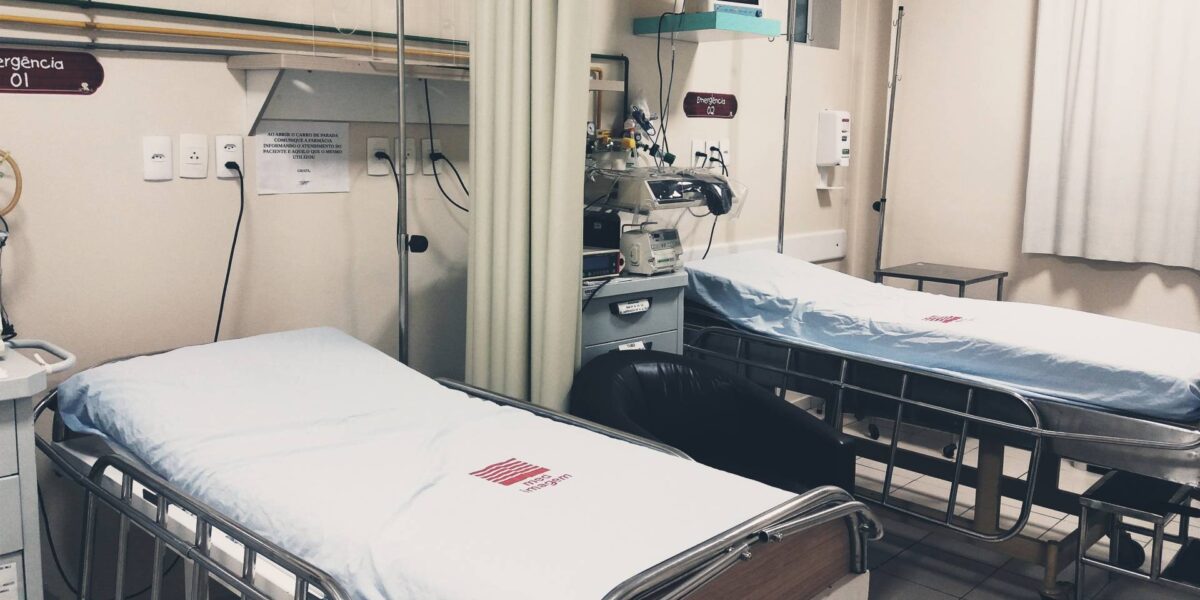Across Canada, there are general hospitals and others that provide varying levels of specialty services. There are public, religious and private hospitals. There are hospitals that specialize in paediatrics, in orthopaedics, in maternal health, in hernia surgery, in cardiac health, in psychiatry, in cancer treatment, and in rehabilitation, among others. All of these hospitals have beds and yet not all of these beds are accessible to and appropriate for all hospitalizations.
Is Canada’s number of hospital beds sufficient? The answer is complicated.
Calculations vary, with one reputable source showing Canada had the third highest rate of hospital beds per thousand population in the world, at 2.55 per 1,000 in December 2020. These beds had an average occupancy rate of over 90 percent, even before COVID-19. Such a high occupancy rate suggests that more beds would help.
Would they? It is worth remembering the belief among healthcare planners and strategists that there is no such thing as an empty hospital bed. The analogy often used is of the number of vehicles on a highway. If drivers leave the recommended three car lengths between their vehicle and another, does the space remain empty? Unlikely. More likely, another vehicle will take advantage of the space available. The reality is that as soon as more hospital beds are built (assuming they can be staffed, which is not always certain), the beds will be filled.
Bed sufficiency should reflect accessibility
In communities where the local hospital is essentially a healthcare centre, housing physician offices and other related services, with few other options available, the answer may well be that there are too few beds.
As healthcare planners are reminded by residents of small communities, a distance of 50 or more kilometers to access care may be simple in big cities and surrounding suburbs and exurbs. Not so in the far north, for example, where it might easily take several hours to travel that distance, due to road conditions, especially in winter.
Bed sufficiency should reflect specialization
Bed numbers should also take into account other resources available. In Canada, hospitals are described as primary or community care, specialty and tertiary or super-specialty centres. Community hospitals provide standard medical and some general surgical services, often including obstetrics. The limitations on other services reflect the range of specialty training by staff physicians, nurses and allied healthcare providers.
Specialty physicians and staff need a large enough pool of potential patients to ensure their skills are updated and maintained. They also need specialty colleagues, diagnostic and ancillary services that might be beyond the scope of the community hospital. Again, it is a question of numbers.
Residents of small and/or more remote communities might prefer admission to the local hospital when active treatment is required. They may have established relationships with the physician and other staff. But can the community hospital provide the type of service their admission requires? Not always. Not every hospital has a critical mass of either patients or specialist resources.
The number of beds in a community hospital is not equivalent to the number in more specialized facilities. The reverse is also true. Canadians who live close to large ultra-specialized hospitals, frequently tied to medical school training programs, may also require fairly standard in-patient care, not always abundant in specialized facilities. It does not help an adult patient requiring an appendectomy to be within walking distance of a paediatric or cancer centre.
Bed sufficiency should reflect matches of patients to resources
Demographics play an enormous factor in bed planning and allocation. A prime example is so-called “bed blockers.” Canada has one of the highest rates of institutionalization of the elderly in the world. According to Statistics Canada, roughly one-in-20 Canadians aged 65 and older lived in [nursing and residential care or long-term care] facilities in 2021, rising to over one-in-four Canadians aged 85 and older.
The Canadian Institute for Health Information records a total of 2,076 long-term care homes across Canada in 2021. These facilities include both public and private institutions and house some 198,220 residents. The facilities vary in the extent and level of care they provide; some have graduated facilities that enable residents to transition when more care is needed; however, this is not the norm.
Despite the large number of long-term care residents, waiting lists are common. Many Canadians remain in acute care hospitals because no long-term care beds are available. These people may have been admitted to hospital with an acute condition that is now stabilized. Others came to hospital because there was no other option when they could no longer remain at home. To many Canadians, aging in place is only a myth.
The term “bed blockers” is an example of victim-blaming. These are people who need care, albeit not the level of care of the hospitals that admitted them. Statistics are not collected to determine the number of people in this group. Whatever percentage of occupancy or beds these patients represent, it is too high.
The same can be said about outliers. Examples are Canadians who need long-term care as younger people. This might include children with life-limiting conditions who have aged out of paediatric facilities where they previously were cared for. It might include Canadians with multiple chronic health issues, who do not fit the usual profile of long-term care residents.
How many hospital beds does Canada need?
How would planning and distribution of hospital beds differ if demographics were taken into account more significantly? How would it be calculated if distances were calibrated in time, rather than solely by kilometers?
There are other factors as well. Beds are useless without appropriate staffing. How would bed planning change if it were coordinated with planning for education programs for medical, nursing and ancillary healthcare providers? What about changes in technology and their effects on treatment and hospital stays? And how are incidence and prevalence of diseases reflected in bed planning? What about funding?
As said at the outset, it’s complicated. And these factors are just the beginning.




